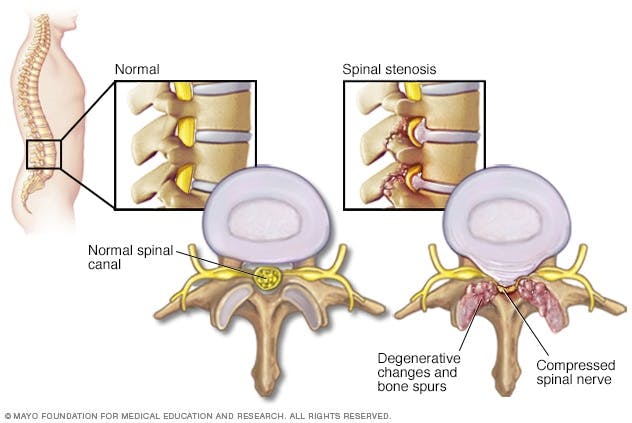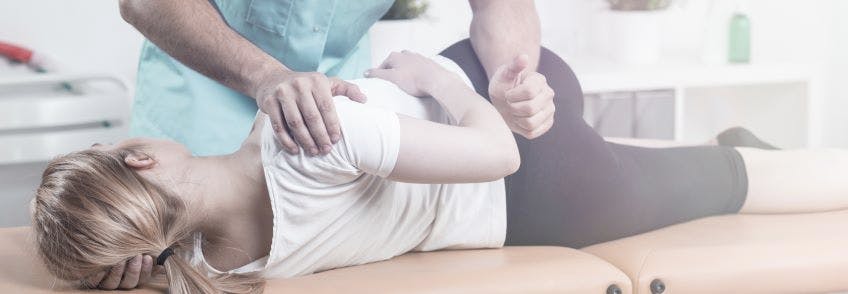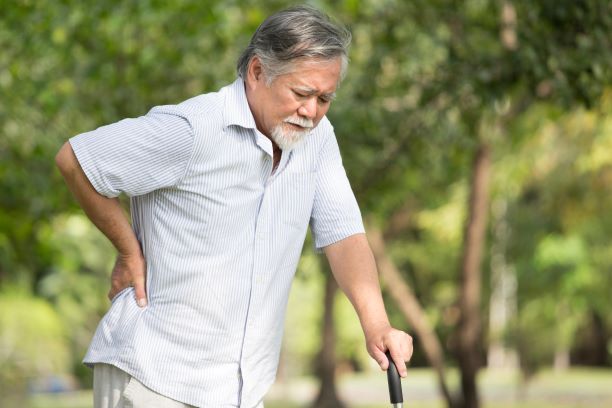Spinal stenosis is a narrowing of the space around your nerves and spinal cord in your back. Many people with signs of spinal stenosis on an MRI experience no pain. Others experience extreme pain.
Stenosis feels like a deep ache down into your buttocks, thighs, or lower legs. Your pain is worse when standing or walking. You also may have numbness, tingling, and weakness in your legs. It is rare to have pain sitting or lying down. Leaning over a shopping cart relieves pain from stenosis. This article describes the most common and effective spinal stenosis exercises and treatments.
Causes of Spinal Stenosis

Most people with spinal stenosis are over the age of 50. Normal age-related changes in your spine cause stenosis. Arthritis of your joints in the spine is the most common cause. Also, degenerative changes to your discs lead to the narrowing of your spine. These age-related changes are normal and no different than the graying of your hair or wrinkles of your skin.
In some people, these changes result in pain. Strangely, others never have pain. It is also important to understand that the extent of stenosis on an MRI does not always match up to how severe your symptoms are.
Treatments for Spinal Stenosis
Contrary to popular belief, spinal stenosis does not always get worse. Some treatments will reduce your pain and improve your function. Common treatments include aerobic exercise, stretching, strengthening exercise, massage, manual physical therapy, acupuncture, and injections. The remainder of this article will discuss the role of physical therapy, injections, and surgery.
Physical Therapy Proven to Help People with Spinal Stenosis

In most cases, regular exercise is the first step in managing your pain from spinal stenosis. Physical therapists develop individualized exercise programs for people with stenosis. This includes stretching exercises for your lower back, hips, and legs. The benefits of stretching are accelerated by including manual therapy treatments delivered by your physical therapist. Manual physical therapy for your hips and lower back is a proven approach to reduce pain and disability associated with stenosis.
Strengthening exercises for your core muscles and legs are beneficial to improve your walking. The 90/90 march, shown below, is an easy core exercise you can perform at home. It is also important for the exercise program to include aerobic training. This is in the form of cycling or treadmill walking.
People with spinal stenosis are encouraged to continue to walk. This is important! Some pain with a walking program is expected and acceptable. Your physical therapist will help you determine how much pain is okay.
Injections are Helpful When Pain is Severe

Epidural steroid injections treat back and leg pain associated with spinal stenosis. This involves injecting anti-inflammatory medication into the epidural space around your spinal nerves. Decreasing inflammation near your nerve will alleviate pain in your legs. Some people experience immediate relief with epidural injections. This leads to improved walking in the short term. However, research suggests the long-term effectiveness of injections is limited. This means your pain will come back.
Surgery is Always the Final Option

Surgery for spinal stenosis involves removing bone around your compressed nerve or spinal cord. Some surgeons also fuse vertebrae to prevent movement within your spine.
Complications from surgery occur in 10% to 24% of cases. These include fracture, failed fusion, cardiac events, stroke, and in very rare cases death. Surgery can be very effective for some people. However, research suggests there is no long-term difference between those who are treated conservatively and those who undergo surgery.
Take Action and Get Your Body Moving Without Pain
Spinal stenosis is common in people over 50 years old. Exercise, lifestyle changes, and other non-surgical treatments are very helpful. Remember, surgery is your last option.
Research shows people who complete a course of physical therapy are less likely to undergo surgery for spinal stenosis. Talk to your physical therapist about how you can get back to doing what you love. The physical therapists at BSR have been helping people move without pain since 2007. Contact us to get started.


